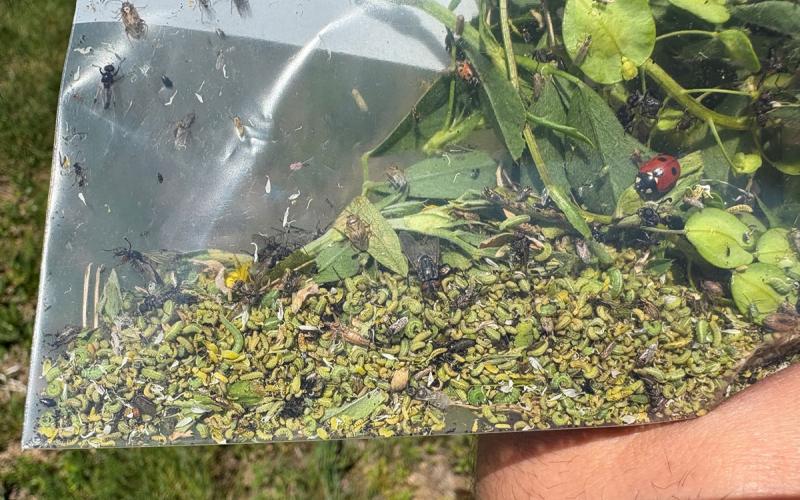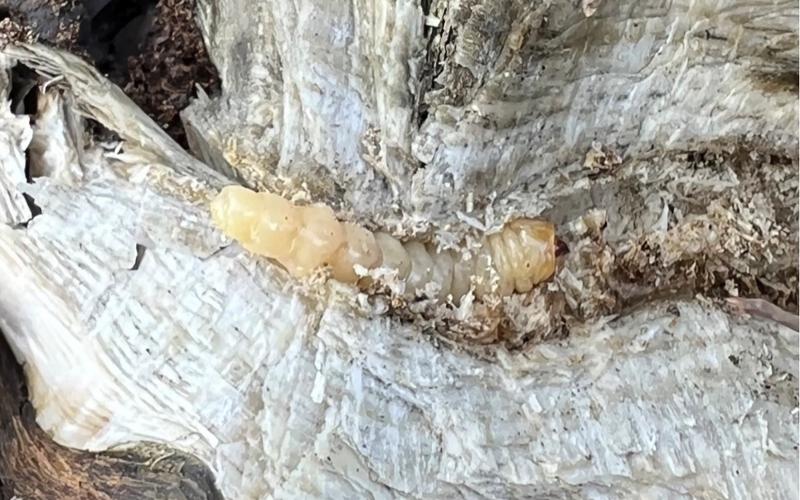The alfalfa weevil is a major spring insect pest of South Dakota alfalfa. Before 2018, this insect was reported as having large populations throughout much of South Dakota. However, during 2018 and 2019, we received fewer reports of alfalfa weevils, which may have been a result of the cooler and wetter spring conditions that were observed. It’s possible that populations may also be lower in 2020 due to the low populations during the previous two years.
The alfalfa weevil defoliates alfalfa as both adults and larvae, but the larvae cause a lot more defoliation than the adults. One of the ways that we can determine when to start scouting for alfalfa weevils is by calculating degree days. In South Dakota, alfalfa weevils overwinter as adults. There are two strains of alfalfa weevil present in South Dakota and both overlap in most of the state. They are the Eastern strain and Western strain. Although the two strains are nearly identical in appearance, they differ in their spring emergence patterns, with the Eastern strain emerging earlier in the season than the Western strain. As a result, it sometimes will appear that there are two generations of alfalfa weevils during the spring.
Estimating Activity
To monitor for alfalfa weevils, we can estimate activity based on degree day accumulation. The equation for degree days is:
(Maximum daily temperature + Minimum daily temperature)/2 – The Developmental Threshold
For the alfalfa weevil, the developmental threshold is 48°F. This equation is used for days that the maximum temperature exceeds 48°F. In cases where the minimum temperature is lower than 48°F, the actual temperature is substituted by the 48°F developmental threshold since no development is occurring below it. Degree day accumulation begins on January 1st. First overwintering adult alfalfa weevil activity is generally observed around 200-degree days and larvae hatch is generally around 300-degree days (Table 1).
The alfalfa weevil has four larval instars, with the 1st being the smallest larvae and the 4th being the largest larvae. The later instar larvae will consume additional leaf tissue, which results in increased defoliation. As a result, management would ideally be done while larvae are still in the 1st and 2nd instar growth stages.
|
Degree Days |
Alfalfa Weevil Activity (Overwintering as Adults) |
|---|---|
|
|
Limited to no activity of alfalfa weevils. |
|
|
Overwintering adult activity is observed in alfalfa fields (begin scouting fields). |
|
|
Spring laid eggs hatch. First instar larvae begin feeding. |
|
|
Second instar larvae feeding. |
|
|
Third instar larvae feeding. |
|
|
Fourth instar larvae feeding. (Period when greatest damage will occur) |
|
|
Pupation. |
|
|
Adult emergence (will overwinter). |
Scouting Recommendations
For South Dakota, most of the state is still below 200-degree days except for the Hot Springs area. For this reason, scouting for alfalfa weevil should begin in the Hot Springs area, but it is not necessary for the rest of the state.
| Location |
Since January 1, 2020 |
|---|---|
| Buffalo |
|
| Newell |
|
| Rapid City |
|
| Hot Springs |
|
| Lemmon |
|
| Faith |
|
| Cottonwood |
|
| Mission |
|
| Selby |
|
| Gettysburg |
|
| Pierre |
|
| Winner |
|
| Aberdeen |
|
| Huron |
|
| Mitchell |
|
| Tyndall |
|
| Sisseton |
|
| Brookings |
|
| Vermillion |
|


